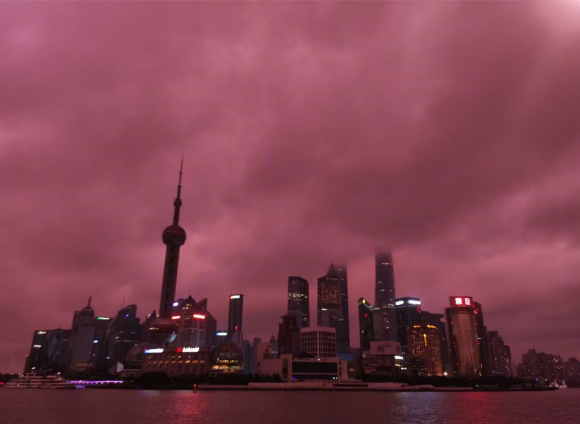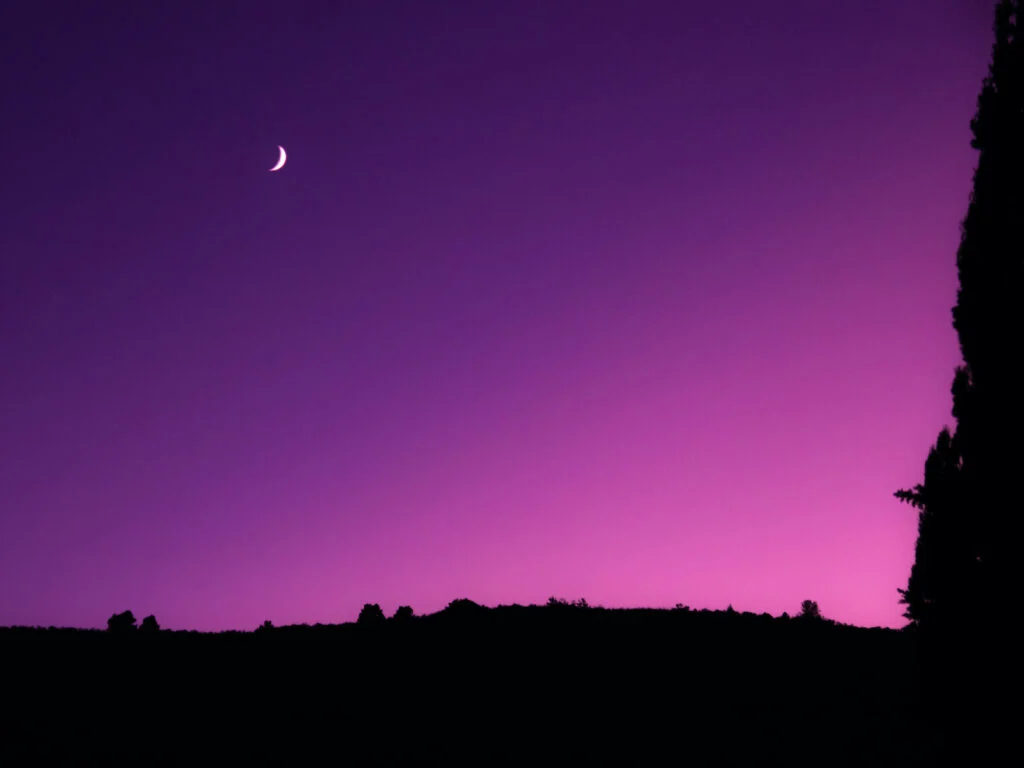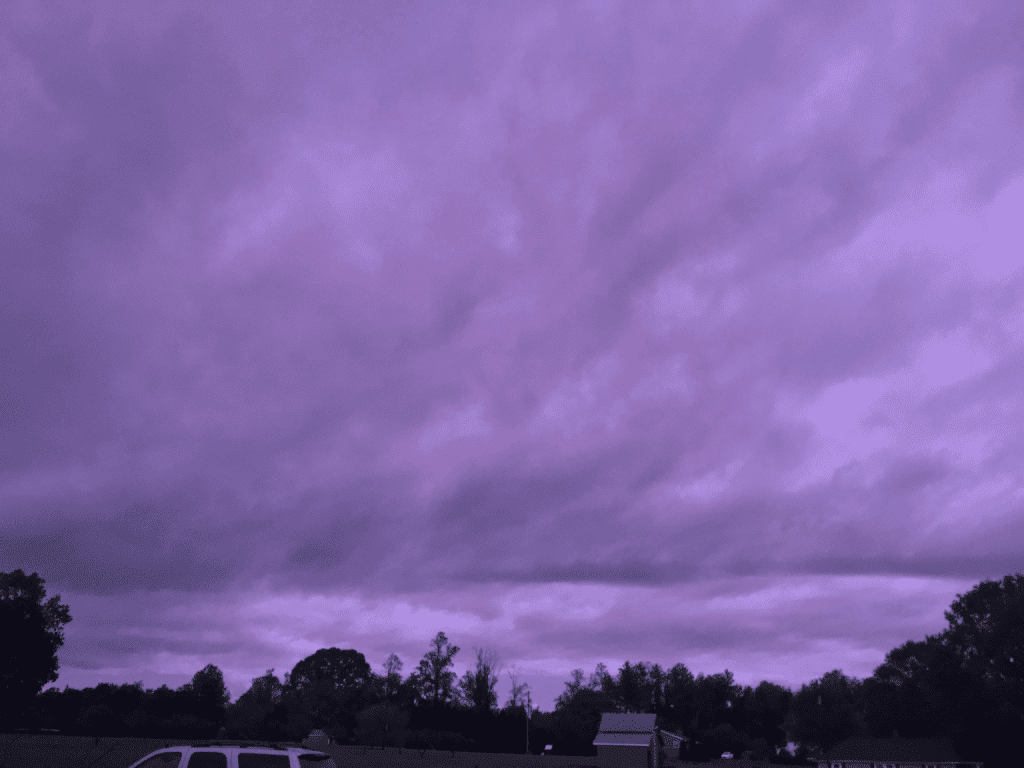Have you ever looked up and noticed the sky suddenly turning a vivid shade of purple? It’s a breathtaking sight, but one that can also signal something more serious. This unusual color change is often an indicator of an approaching storm or even a natural disaster. But what causes the sky to turn this striking hue? In this article, we’ll explore the science behind this phenomenon, why it happens, and what it might mean for the weather.

The Science of a Purple Sky: What Makes It Happen?
The purple sky phenomenon is actually a fairly common optical event, often linked to specific atmospheric and meteorological conditions. To understand this, we need to dive into the science of light scattering and the atmosphere’s composition.
How Light Scattering Creates the Purple Hue
When sunlight enters the Earth’s atmosphere, it doesn’t travel in a straight line. Instead, it is scattered in multiple directions by particles like dust, water vapor, and other small atmospheric components. This scattering effect determines the color we see in the sky.
- Shorter wavelengths, such as violet and blue, are scattered more than longer wavelengths like red and orange.
- During normal conditions, the blue light scattering is more dominant, giving us the typical blue sky.
- However, before a storm, the atmosphere becomes filled with more water vapor and particles, which alters the scattering dynamics. In these conditions, the longer wavelengths of red and orange light can penetrate the thick layers of moisture in the air, mixing with scattered blue and violet light. This combination creates a purple or purplish-red hue in the sky.
Why Does the Sky Turn Purple Before a Storm?
When you see the sky turn purple, it’s often due to a mix of meteorological and optical factors working together. This phenomenon is not merely a pretty visual—it’s a natural warning sign that weather conditions are changing rapidly.
1. Increase in Humidity
As a storm approaches, the humidity levels rise sharply. Water vapor acts like a prism, bending and scattering light in different directions. With more water vapor in the air, light waves are refracted more intensely, enhancing the purple appearance.
2. Dust Particles and Air Pollution
Dust, pollen, and pollution in the air contribute to the sky’s purple tint. These particles increase the scattering of light, amplifying the purple hues in the atmosphere. Urban areas, where pollution is higher, are more likely to experience this phenomenon before storms, as there are more particles to scatter the light.
3. Cloud Thickness and Density
The thickening of clouds before a storm is another key factor. When storm clouds gather, they create a denser atmosphere, which allows more red and orange wavelengths to filter through. When these longer wavelengths blend with the scattered blue and violet light, the sky takes on a purple hue.

What Does a Purple Sky Indicate About the Weather?
While a purple sky can be visually stunning, it is often a signal of potentially severe weather on the way. Here are some weather conditions that a purple sky might foreshadow:
1. Imminent Storms
The most common association with a purple sky is an approaching storm system. The high humidity and dense cloud cover needed to create the purple effect are typical characteristics of stormy weather. It’s not uncommon to see a purple sky shortly before heavy rainfall, strong winds, or even thunderstorms.
2. Hurricane Activity
In coastal regions, a purple sky can also be a precursor to hurricanes or tropical storms. The intense moisture in the air combined with storm clouds can create a vivid purple color. For those living in hurricane-prone areas, a sudden purple sky could be an early warning sign of worsening conditions.
3. Tornadoes and Extreme Weather
In some cases, a purple sky may appear before more extreme weather events like tornadoes. This occurs when warm, moist air meets cold, dry air, creating a highly unstable atmosphere. The purple sky, in this context, can serve as a visual cue of dangerous weather brewing in the area.
Is a Purple Sky Dangerous?
While the sky turning purple itself is not directly dangerous, it is often a sign of severe weather conditions that can pose serious risks. Knowing what this visual cue indicates can help you prepare for potential dangers. If you notice the sky turning a deep purple, it’s wise to take safety precautions and stay informed about the latest weather forecasts.

- Stay Indoors: If you see the sky changing color before a storm, it’s best to find shelter immediately.
- Monitor Weather Alerts: Check your local weather updates for any warnings about thunderstorms, high winds, or potential flooding.
- Prepare Emergency Kits: If you live in an area prone to severe storms or hurricanes, have an emergency kit ready with essentials like water, food, flashlights, and first aid supplies.
Other Natural Factors That Cause the Sky to Turn Purple
While storms and humidity are the most common causes of a purple sky, there are other natural events that can create this effect as well.
1. Volcanic Eruptions
Volcanic eruptions release ash and sulfur dioxide into the atmosphere, which can scatter sunlight and create vibrant purple skies. This effect can last for days or even weeks, depending on the intensity of the eruption and the amount of particles released.
2. Wildfires
Wildfires generate a significant amount of smoke and ash, which can scatter light in a way that creates a purple sky. This is more common in areas prone to wildfires during the dry season.
3. Pollution and Smog
Air pollution, especially in densely populated areas, can contribute to the purple sky effect. Industrial emissions, vehicle exhaust, and other pollutants increase the particles in the air, making purple skies more frequent.
Conclusion: A Beautiful Yet Serious Phenomenon
The sudden appearance of a purple sky is more than just a beautiful spectacle; it’s a complex optical phenomenon with serious implications. While the colors are mesmerizing, they often serve as a natural warning sign of severe weather. Understanding what causes the sky to turn purple can help you stay prepared and respond appropriately.
So, the next time you look up and see a purple sky, take a moment to appreciate its beauty—but also be cautious. Nature has its way of communicating with us, and sometimes, a colorful sky is its way of saying, “Get ready.”


